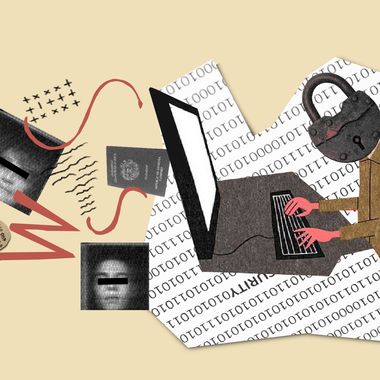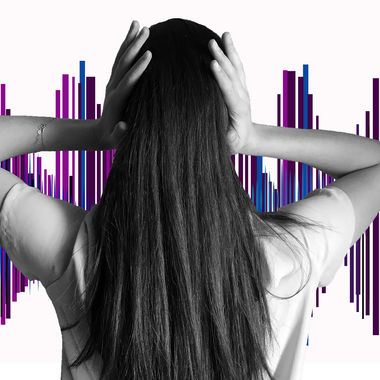Sun Apr 04 2021 · 6 min read
High Tech, Low Culture: Armenian Creative Industries and New Media
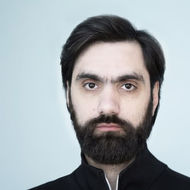
By Vahram Akimyan
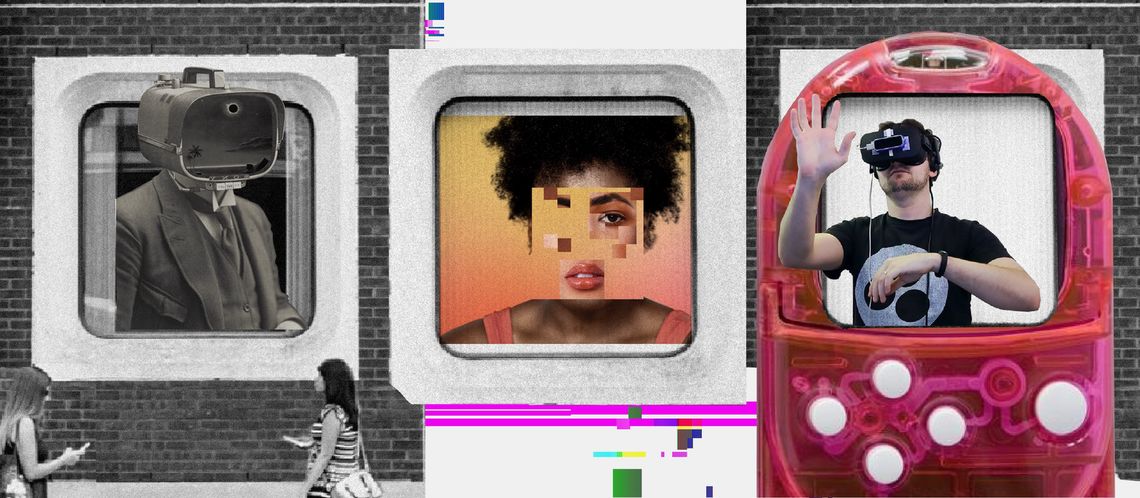
Illustration by Armine Shahbazyan.
This is not a cyberpunk essay about a dystopian future, but rather an attempt to take a pragmatic look at creative industries and the landscape of digital culture in Armenia. In short, a bird’s-eye view of things that are crucial and essential for the industry. The most important question that we need to ask is, “Why does a country with rich cultural heritage and a developing technological sector still lack in the field of new media?”
The Good
The IT sector in Armenia has been developing rapidly for years now. After the establishment of the Ministry of High-Tech Industry and the rollout of preferential policies, we finally moved the needle.
Armenia positions itself as a bastion of technology in the region, in terms of its rapidly developing IT sector. Armenian companies with business acumen, such as PicsArt and Krisp, are already global players. It looks like the future bodes well, considering all the challenges of a post-Covid reality.
Incubators are stimulating the industry. Special programs have been initiated to support young coders. Engineers who design robots and drones are testing the waters. The industry is buzzing. According to research done by Darpass, the ICT sector employs 28,460 employees, out of which 16,212 are in IT companies. Technology is evolving and has great potential to support new media art forms.
On the other side of the spectrum, we have the creative industry, which is rising but slowly. We have branches of international organizations, like the Goethe Institute and British Council, that promote art activities. Big cultural events have started to tour in Armenia. Recently, we had two big heavy lifters in Yerevan: Unsound Festival and Boiler Room.
We have TUMO, where over 20,000 teens are taught things like game development, filmmaking and 3D modeling, all free of charge. There is UWC Dilijan College. We joined the Creative Europe program in 2018, which is a great opportunity to establish networks and develop joint projects with European partners.
You might think that these factors would be welcome news to celebrate as the world tries to return to “normal,” or rather a “new normal.” After all, the economy had suffered greatly due to the virus panic and the 2020 Artsakh War. Not at all.
The Bad
All things considered, the creative sector is lagging behind. I’m not referring to digital culture or new media art, but the art sector in general. Armenia is out of the global loop. Simply put, the ecosystem is not there.
There is no holistic vision or strategy and no frameworks. Issues such as the protection of intellectual property paralyze the sector. With technology on the rise, creative industries are still stuck in the “analog” era. The field lacks the prospective vision of digital culture, technology and entrepreneurship. There is no interdisciplinary approach, no synergies with other sectors, no spillovers. Decision-makers just have no clue on how to connect the dots.
Art education is outdated and does not position itself as a mecca of avant-garde thinkers and innovative practitioners. Moreover, being an artist is somehow an undefined and blurry occupation. In the best-case scenario, you can become a UI designer and call it a day. Arguably, the most vulnerable sector during COVID-19 was “culture.” Sadly, many officials associate culture mainly with heritage. We even have a “special” name for that “cultural heritage,” which to be honest is kind of a branch of tourism and definitely not arts.
We all hear the buzzwords like “creativity” and “innovation.” But the main problem is that we are missing an important piece of the puzzle. For holistic vision, we also need critical thinking, the ability to reflect, which is an important gift from the soft sciences.
Ah, yes, the rhetoric of hard science evangelists. Economic development is seen mostly by the development of natural sciences and usually doesn’t take into account humanitarians. Big mistake. We all witnessed what damage can be done when society lacks mediators and critical thinkers. COVID-19 and the 2020 Artsakh War were alarming indicators that we lack soft science professionals. What we witnessed was not a technological crisis, but a humanitarian one.
We need to educate and prepare thinkers, not just employees; professionals who can ask the right questions and bring value; thinkers who can be mediators and visionaries; thinkers who will be the architects of new ecosystems.
We need critical discourse in the age of digital revolutions. It is important to develop the dialogue of humanities and technology, creative industries and science. These symbiotic relations are crucial not only for industries, but also for the development of society in general.
The Digital
The digital revolution has reshaped the world. It has a huge impact on creative industries. Digital media practices such as coding, immersive video, generative images, game engines and interactive sound are the new dialects of the global language of media.
The disproportional development of the IT sector may cause collateral damage soon, as there are no regulators who are savvy and critical enough to raise the right questions. Ethical concerns must be addressed, especially when techno-fetishism is pushed hard, and the sector has carte blanche. With technology such as synthetic media, we need to develop countermeasures, and we need to do it now.
Another big concern is the localization of the global experience—the lexicon of media and tech. Of course, one can argue that English is basically a lingua franca for technology, but still, we need to remove the gatekeeper. I am overwhelmed just thinking about how much work needs to be done in translating media theory.
It is imperative to understand that the language of new media is far more than just human-related matters. We are inside a paradigm shift where humans code not only for humans but for machines as well. And with the introduction of AI, machine to machine connections is something that needs to be observed very carefully. This is why media studies are crucial.
I remember being at the scientific forum dedicated to new technologies, where one of the IT companies presented a weapon recognition solution. The system will raise an alarm when it “sees” a weapon. Cool, right? But when I asked who will be responsible when a false positive will trigger the alarm that might end in someone getting shot, my question was dodged. We need to understand that technology is a tool, and someone needs to regulate that tool, or it will become an unregulated behemoth. We all saw how the big tech giants got when questioned by the U.S. Congress.
We need cultural hubs, where a wide spectrum of theorists and practitioners will be hosted. Digital creators, contemporary art, theater, fashion and visual art are all under the same roof. Only then will synergies be possible. Hackathons, where artists and coders meet, must happen on a regular basis. Incubators for such playgrounds are the key to cultural development. Internet studies, new media art, creative coding: mix ’em, shake ’em, serve ’em.
It is important to promote digital art and organizations dedicated to mediating the understanding of digital culture. Most importantly, we need to stop treating media studies like the bastard brother of hard science. It is the cornerstone for any creative industry. Unfortunately, in our case, it is hardly creative and definitely not an industry… yet. As Cathy N. Davidson and David Theo Goldberg wrote in their 2004 A Manifesto for the Humanities in a Technological Age, “The humanities have a central place in exploring the implications of digital cultures: how technology shapes what we think about the human and the humane.”
Artistic programs exploring new technologies and emerging networks can offer new models of operations. We are entering untapped territory. We have a new kid on the block—blockchain, and it continues to transform the world in the innovative disruption. Furthermore, we need facilitators to connect academics, technologists and artists. Digital discourse is key for a better understanding of data privacy, virtual domain and modern society in general. The future is here, and we need the right tools to understand it. Otherwise, there won't be a ghost in the shell.
also read
The Cyber Battlefield is Just as Important: Armenia’s Cybersecurity
By Artur Papyan
The scale and level of coordination of cyberattacks by Azerbaijani hackers in 2020, indicates careful planning and centralized coordination. Artur Papyan writes about the need for education about cybersecurity in Armenia, in both the private and public sectors.
The Prospects of Electric Mobility in Armenia
By Irina Ghaplanyan , Erik Grigoryan
It is widely believed that electric vehicles will transform human mobility and energy usage patterns. Could Armenia become a hub of innovation for electric mobility?
Armenian Startups in Deep Tech: How Krisp is Breaking New Ground
By Tatev Mkrtumyan
Deep tech startups are built on scientific and engineering discoveries and innovations. In the Armenian startup ecosystem, there are only a handful of deep tech startups. One of them is Krisp.
Podcast
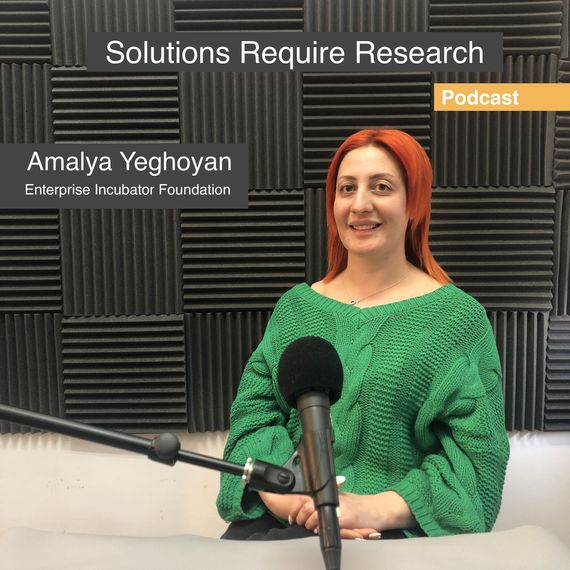
Amalya Yeghoyan, Project Manager of Enterprise Incubator Foundation (EIF), speaks about a number of their programs including women’s entrepreneurship, programming courses for veterans of the 2020 Artsakh War and the recently launched Armenian Engineering City.

